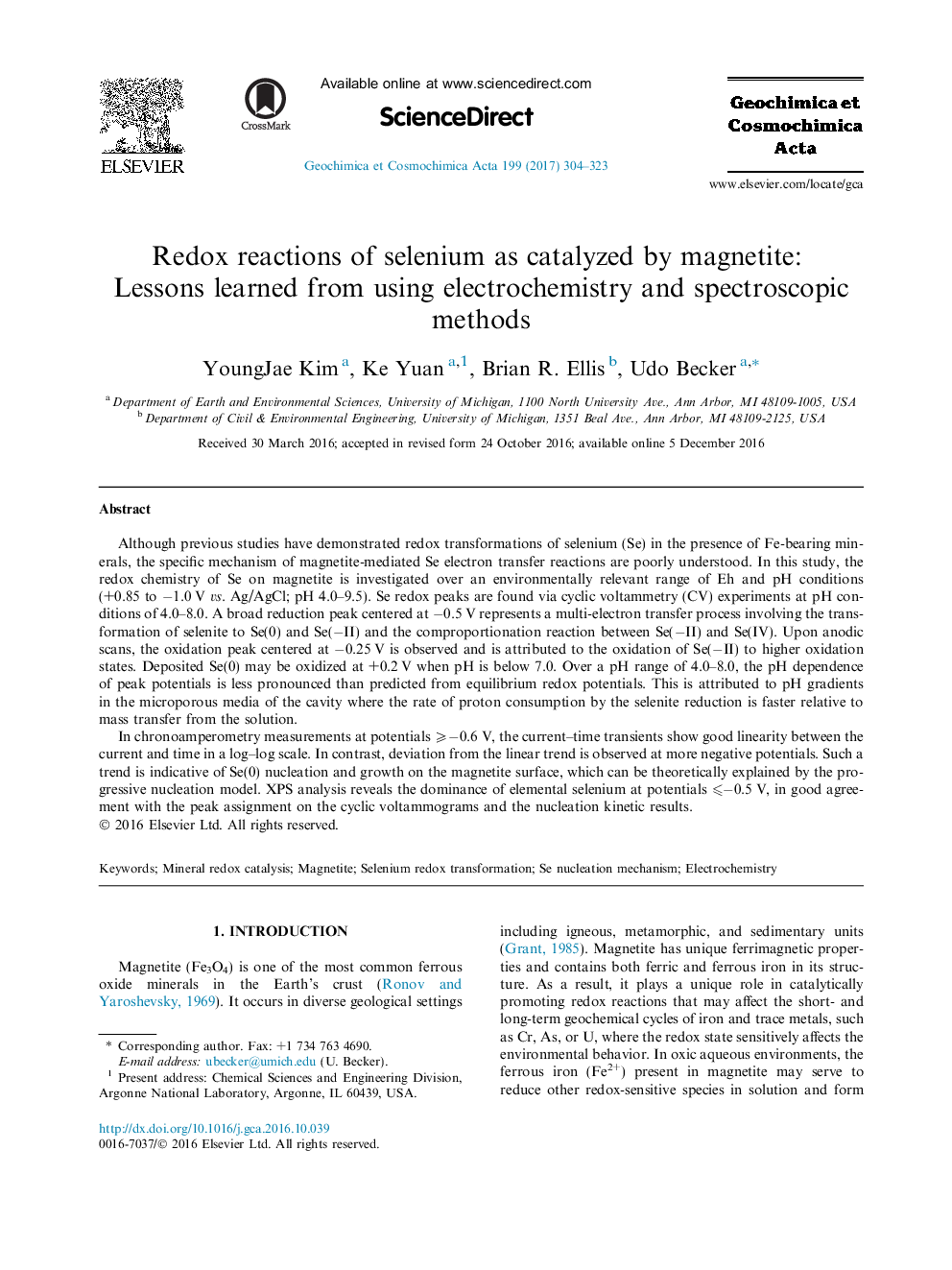| کد مقاله | کد نشریه | سال انتشار | مقاله انگلیسی | نسخه تمام متن |
|---|---|---|---|---|
| 5783377 | 1637958 | 2017 | 20 صفحه PDF | دانلود رایگان |

Although previous studies have demonstrated redox transformations of selenium (Se) in the presence of Fe-bearing minerals, the specific mechanism of magnetite-mediated Se electron transfer reactions are poorly understood. In this study, the redox chemistry of Se on magnetite is investigated over an environmentally relevant range of Eh and pH conditions (+0.85 to â1.0 V vs. Ag/AgCl; pH 4.0-9.5). Se redox peaks are found via cyclic voltammetry (CV) experiments at pH conditions of 4.0-8.0. A broad reduction peak centered at â0.5 V represents a multi-electron transfer process involving the transformation of selenite to Se(0) and Se(âII) and the comproportionation reaction between Se(âII) and Se(IV). Upon anodic scans, the oxidation peak centered at â0.25 V is observed and is attributed to the oxidation of Se(âII) to higher oxidation states. Deposited Se(0) may be oxidized at +0.2 V when pH is below 7.0. Over a pH range of 4.0-8.0, the pH dependence of peak potentials is less pronounced than predicted from equilibrium redox potentials. This is attributed to pH gradients in the microporous media of the cavity where the rate of proton consumption by the selenite reduction is faster relative to mass transfer from the solution.In chronoamperometry measurements at potentials ⩾â0.6 V, the current-time transients show good linearity between the current and time in a log-log scale. In contrast, deviation from the linear trend is observed at more negative potentials. Such a trend is indicative of Se(0) nucleation and growth on the magnetite surface, which can be theoretically explained by the progressive nucleation model. XPS analysis reveals the dominance of elemental selenium at potentials ⩽â0.5 V, in good agreement with the peak assignment on the cyclic voltammograms and the nucleation kinetic results.
Journal: Geochimica et Cosmochimica Acta - Volume 199, 15 February 2017, Pages 304-323